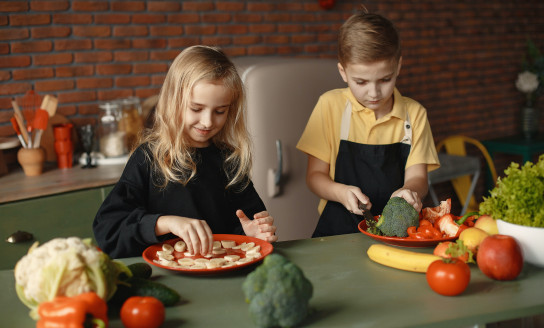The benefits of family meal time
Whether it’s a special weekend lunch or a week night dinner, sitting down for a meal together has incredible benefits for children – and for the family as a whole – when it comes to health, relationships and social development.
Promote positive eating
Here are three easy ways to help your tamariki create positive, healthy relationships with food.
- Let tamariki decide when they’ve had enough. If you force children to clean their plate, it teaches them to override feelings of fullness. This includes using dessert as the prize for eating their dinner.
- Show love in other ways. Instead of showing children love by giving them ‘treats’ (which often aren’t good for them) – give them a hug, some of your time, or praise.
- Avoid bribing or rewarding your children with food.
Family bonding
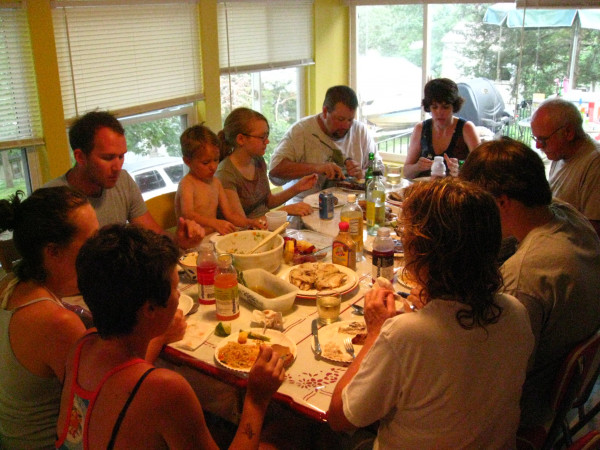
(Jason Lander, Flickr)
Eating regular meals together provides a time for the whole family to come together during the hustle and bustle of everyday life.
For young children, regular family meals can provide a sense of security, love and belonging in the family.
Routines
Children thrive on predictability—knowing what will happen and when. When children know the family routine is to eat together at the table, they will also learn the other routines that go with eating.
For example, washing their hands and for some families, saying a blessing over their food or thanking the people who prepared the meal.
Healthier food choices and eating habits
People of all ages eat better when they share a meal with others. Whānau that eat together generally:
- eat more nutritiously
- are more likely to share good eating routines, and are
- less likely to be overweight due to better nutrition and habits.
Teaches children to be responsible
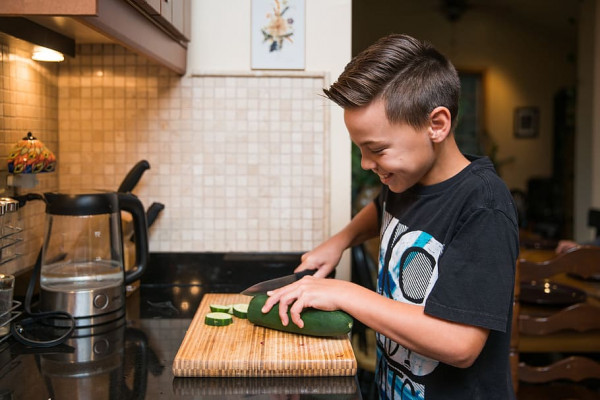
Cooking together teaches your little ones how to plan meals and prepare food – and how to clean up!
Some families will have special jobs the children can do to help, such as setting the table and helping with food preparation (washing the vegetables, measuring out ingredients, stirring, etc).
When tamariki are involved in preparing and helping with the meal, they’re more likely to engage with and be excited by meals. Learning to cook meals at an early age can also improve long term cooking skills and encourage a healthier lifestyle.
After the meal, children can also help take plates and dishes to the bench and wipe down the table as well as helping with washing up or loading the dishwasher.
By working with other family members to get these chores done they are learning about teamwork, another important life skill.
Improved mental health
Encouraging your children to talk about their day and genuinely listening to their responses, shows them you value and respect who they are.
Studies have shown that children who routinely eat their meals together with their family are more likely to experience long-term physical and mental health benefits.
Better communication skills
Mealtimes are an opportunity for children to develop communication skills and qualities like empathy and understanding.
Children and young people who sit down to a meal routinely and talk with their family learn to become confident communicators.
Try to keep the peace at mealtimes and avoid lectures or arguing.
Selecting meals
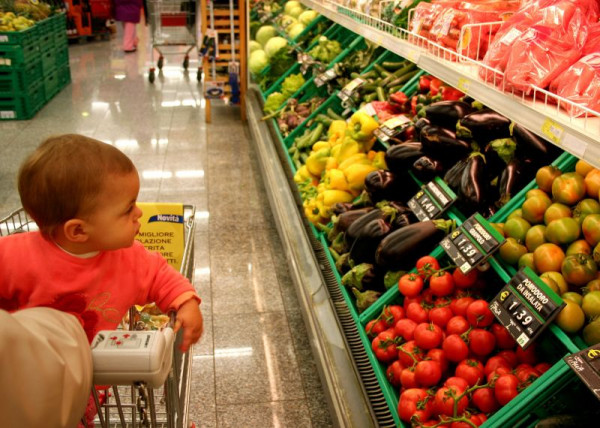
(Stefano Mortellaro, Flickr)
Each week the family could plan out the meals together and make a shopping list of the ingredients needed. Most children enjoy deciding what to make for dinner.
Talk to them about making choices and planning a balanced meal. Young tamariki can then be involved in selecting those ingredients at the supermarket and helping their parents with shopping tasks.
Recipes
Here are a few examples of meals that will have everyone sitting at the table for some quality time and quality food. They’re nutritious, easy to make and most importantly, taste delicious.
Baked mini meatloaves
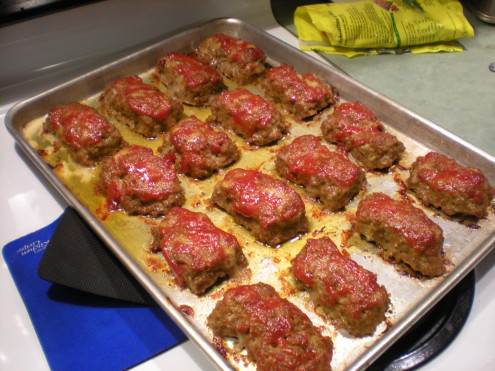
(Adventures of Pam & Frank, Flickr)
Ingredients
500g lean beef mince
1 egg
1/2 cup dry bread crumbs
2 carrots, grated
1/2 onion, finely diced
1/2 cup chopped parsley
1 tbsp tomato paste/puree
1/2 cup tomato sauce
1/4 cup grated cheese
8 slices wholemeal bread
1 tomato, sliced
1 cup baby spinach
1/4 cucumber, thinly sliced
Instructions
- Place mince, egg, bread crumbs, carrots, onion, parsley and tomato paste/puree into a bowl and mix together until combined, using clean hands
- Preheat oven to 190°C
- Grease mini muffin pan with oil and divide the beef mixture equally between the cups, then smooth the tops with the back of a spoon
- Spread ½ teaspoon of tomato sauce on top of each one with the spoon before placing them into the oven to bake
- Bake for 20 minutes or when brown and no longer pink in the middle
- Serve with grated cheese, toasted wholemeal bread, tomato, spinach and cucumber.
Baked chicken frittata
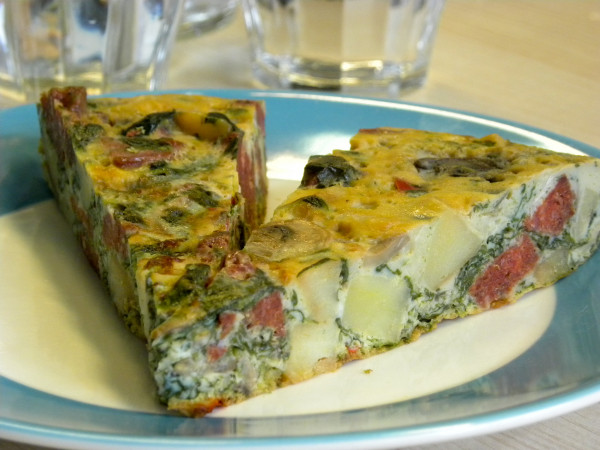
(Rool Paap, Flickr)
Ingredients
3 medium potatoes, boiled, sliced
1 1/2 cups cooked chicken, shredded
1 1/2 cups spinach, blanched or frozen, thawed and squeezed
2 tbsp low fat sour cream
4 eggs
1 tbsp rosemary, optional
Instructions
- Heat oven to 180°C.
- Grease and line a 25cm round cake tin (for 6 serves).
- Lay the sliced potatoes, shredded chicken and spinach in layers on top of each other in the tin.
- Mix together the sour cream and eggs.
- Pour the egg mixture over the ingredients in the tin evenly.
- Sprinkle rosemary leaves over the top (optional).
- Bake for approximately 30 minutes or until all the egg has set.
- Turn out of the tin and serve.
Full of beans pizza (vegetarian)
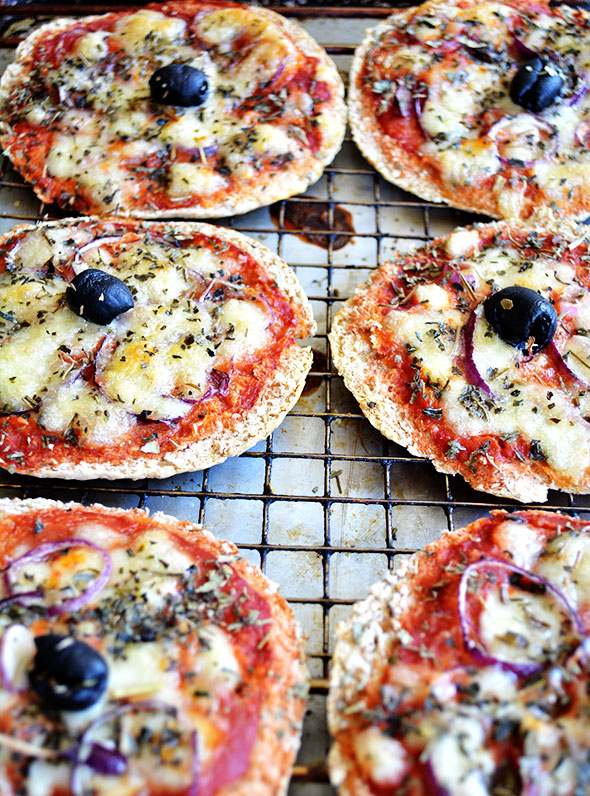
(Sunny Mama, Flickr)
Ingredients
6 small pita breads
1 can chilli beans
1/2 cup grated cheese
2 tomatoes, sliced
1 cup sliced capsicum
Instructions
- Pre-heat oven to 200°C
- Lay pita breads out on a baking tray
- Spread chilli beans evenly over pita bread, then sprinkle with cheese
- Place tomato and capsicum on top of cheese
- Bake for approximately 15 minutes or until lightly browned.
Tips for family meal times
- Keep it simple: Family meals don’t have to be elaborate or complex to be healthy. They don’t need 20 ingredients to be flavourful. Find simple recipes that are easy to make.
- Batch cook: Find one or two days out of the week and cook a big batch of meals to make the rest of the week easier. Freeze meals in individual portions.
- Meal prep: If you don’t like meal prepping, start by planning just four to five meals instead of seven. Pick your most simple go-to recipes and buy only what is needed.
- Have technology-free time: The best meals are the ones when you enjoy each other’s company, learn about one another’s lives, listen, and share.
- Go with theme nights (pasta night, burger night, soup night etc.): An easy way to get your little ones to eat food they normally wouldn’t want to eat is to create fun theme nights.
- Plan your meals around foods that are in season: Eating seasonally has many wins. Seasonal produce is healthier and more nutritious due to natural ripening and less time being stored and transported. You’re also supporting your body’s needs for each season’s climate. It’s also good for your wallet as produce is cheapest when it’s most abundant!
Kitchen safety
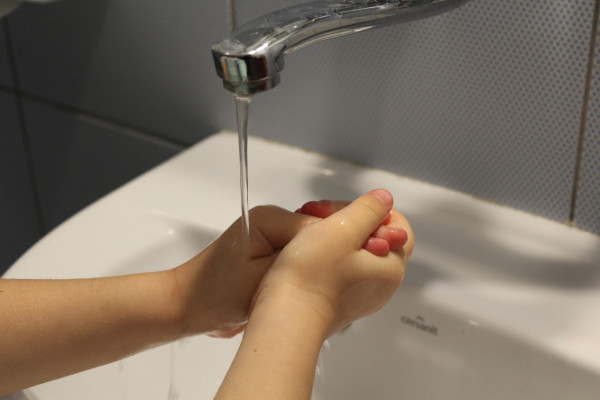
There are a few important safety tips to remember with food and eating:
- Wash hands: Teach children to wash their hands before they eat to prevent illness. Hands should be washed with soap for 20 seconds and dried for 20 seconds
- Sit down when eating: To avoid choking – make sure littlies sit down for the whole time they’re eating. Always supervise tamariki while they’re eating
- Put safeguards in place when children are helping in the kitchen: check the equipment they're using is appropriate for the age and stage they are at e.g. knives for cutting, graters etc. Also, be careful of hot surfaces and heat sources where children are working - remember to scan the kitchen before children start helping to make sure it is safe for them.
